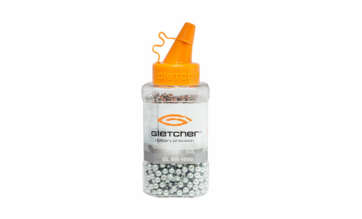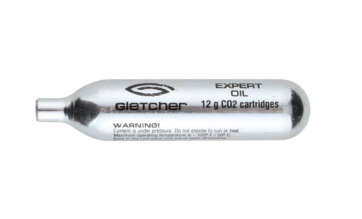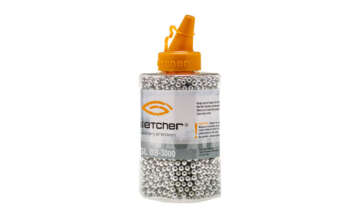Ammo and CO2
Showing all 6 results
-
$599
-
Original price was: $1499.$1199Current price is: $1199.
-
Original price was: $1499.$1199Current price is: $1199.
-
$349
-
Original price was: $1199.$999Current price is: $999.
Buy Ammo and CO2 cartridge online
Air weapons include revolvers, pistols, rifles, where carbon dioxide, which is under pressure in a cartridge, is used as the source of the shot. The cartridge is a reservoir filled with gas. When you pull the trigger, gas comes out of the cartridge in a certain amount.
Carbon dioxide cartridges vary in weight:
8 g (quite rare, used in older models);
12 g (enough for 40–60 shots);
88 g (for 400 shots or more).
Based on the sizes, the first two types are suitable for pistols, and the third one is for rifles. As for the composition, the cartridge is usually filled with CO2, but there are so-called service cartridges. They have oil or silicone added to the gas composition. These cartridges are used in the same way as regular ones, but when firing, the mechanisms are lubricated with oil, and the rubber gaskets become more elastic after silicone.
The pressure and, naturally, the starting flight speed will depend on the temperature inside the cartridge. The higher it is, the greater the pressure, and the stronger the power of the shot. The lower the temperature, the lower the pressure and speed of the bullet. The optimal temperature for using carbon dioxide weapons is approximately 70°F.
CO2 cartridges are non-toxic and safe.
BB and pellets – Ammo online order
Balls used for air shooting are also called BB. The first criterion that is worth paying attention to is the material from which the balls are made. For weapons with a caliber of 4 to 9 mm, metal projectiles are used. Conventionally, metal ammunition is divided into two groups:
Lead;
Steel.
To protect against corrosion, the steel balls can be coated with copper, zinc, nickel or brass. For lead, no additional coating is required. Brass and nickel are rarely used due to their lack of ductility, so let’s take a closer look at copper and zinc.
When choosing balls, be sure to consider the characteristics of your weapon. In general, steel ammunition coated with copper or zinc is used for smoothbore weapons, and lead balls are used for rifled barrels.
Why? The fact is that for weapon models with a rifled barrel, it is usually made of steel. If a steel ball passes through it, then despite the layer of soft metal with which it is covered, such a ball will not be able to fit tightly into the rifling. Lead pellets fit excellently. But in a smoothbore weapon such heavy projectiles will require force to fire, which will lead to premature wear.







